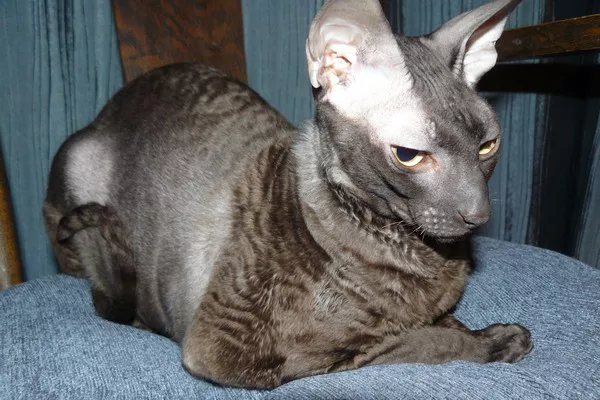In the world of feline companionship, Siamese cats stand out as captivating creatures with their striking appearance, vocal nature, and affectionate demeanor. However, alongside their many endearing qualities, some Siamese cat owners may find themselves grappling with a perplexing issue: aggression. While aggression is not a trait typically associated with Siamese cats, there are instances where these beloved felines may display behaviors that are perceived as aggressive. In this article, we embark on a journey to explore the potential causes of aggression in Siamese cats, shedding light on the complexities of feline behavior and offering insights into how to address and manage aggression in these unique pets.
The Siamese Cat: A Breed Apart
Before delving into the nuances of Siamese cat aggression, it’s essential to understand the breed’s distinctive characteristics and temperament. Siamese cats are renowned for their striking blue eyes, sleek, slender bodies, and pointed coloration, which features darker “points” on the ears, face, paws, and tail against a lighter body color. They are highly social, intelligent, and vocal creatures, known for their strong bonds with their human companions and their penchant for expressing themselves through a variety of vocalizations.
Debunking the Myth: Are Siamese Cats Inherently Aggressive?
One common misconception about Siamese cats is that they are inherently aggressive. However, this stereotype does not accurately reflect the typical temperament of the breed. Siamese cats are not naturally more aggressive than other breeds, but they do possess certain traits and tendencies that may contribute to behaviors that are perceived as aggression. Understanding these factors is crucial for deciphering the root causes of aggression in Siamese cats and addressing them effectively.
1. Social Nature and Dependency: Craving Attention and Interaction
Siamese cats are highly social creatures that thrive on interaction with their human companions. They form strong bonds with their owners and often seek out attention, affection, and companionship. When deprived of social interaction or attention, Siamese cats may become restless, frustrated, or anxious, leading to behaviors that can be misinterpreted as aggression. For example, a Siamese cat may exhibit attention-seeking behaviors such as vocalizing loudly, pawing at their owner, or even resorting to biting or scratching in an attempt to gain attention.
2. Intelligence and Curiosity: Seeking Stimulation and Engagement
Siamese cats are renowned for their intelligence and curiosity, traits that can sometimes manifest as high energy levels and a need for mental stimulation. These cats thrive on challenges, problem-solving tasks, and environmental enrichment activities that engage their minds and satisfy their natural instincts. When deprived of adequate mental stimulation, Siamese cats may become bored, restless, or frustrated, leading to behaviors such as aggression, destructiveness, or compulsive behaviors.
3. Stress and Anxiety: Triggers and Responses
Like all cats, Siamese cats are sensitive creatures that can be easily affected by changes in their environment, routine, or social dynamics. Stressful events such as moving to a new home, the addition of a new pet or family member, or changes in household dynamics can trigger anxiety and fear in Siamese cats, leading to defensive or aggressive behaviors as a means of self-preservation. Additionally, Siamese cats may be more sensitive to changes in their routine or environment due to their highly observant and perceptive nature.
4. Territorial Instincts: Defending Boundaries and Establishing Dominance
Siamese cats, like all cats, have a natural instinct to defend their territory and establish their dominance within their environment. They may exhibit territorial behaviors such as marking, hissing, growling, or swatting when they feel threatened or perceive their territory to be invaded by other animals or unfamiliar individuals. While these behaviors are not necessarily indicative of aggression, they can be misinterpreted as such by cat owners or other pets.
5. Pain or Discomfort: Understanding Underlying Medical Issues
In some cases, aggression in Siamese cats may be linked to underlying medical issues or discomfort. Cats are masters at masking pain, and subtle signs of discomfort may manifest as changes in behavior, including aggression. Conditions such as dental problems, arthritis, urinary tract issues, or injuries can cause pain or discomfort, leading to defensive or aggressive behaviors as a means of self-protection. It’s essential for cat owners to be vigilant in monitoring their Siamese cat’s health and behavior and to seek veterinary care if any signs of illness or discomfort are observed.
6. Socialization and Early Experiences: Shaping Behavior and Temperament
The early experiences and socialization of Siamese cats play a crucial role in shaping their behavior and temperament. Kittens that are well-socialized from a young age, exposed to various people, animals, and environments, and provided with positive experiences are more likely to develop into confident, well-adjusted adults. Conversely, kittens that are deprived of socialization or exposed to negative experiences during their formative months may be more prone to anxiety, fear, or aggression later in life.
Managing Aggression in Siamese Cats: Strategies and Techniques
Addressing aggression in Siamese cats requires a multifaceted approach that takes into account the underlying causes of the behavior and focuses on positive reinforcement, environmental enrichment, and behavioral modification techniques. Some strategies for managing aggression in Siamese cats include:
1. Providing adequate socialization and positive experiences from a young age.
2. Ensuring a stimulating and enriching environment that offers opportunities for play, exploration, and mental stimulation.
3. Establishing a consistent routine and providing a safe, secure space where the cat feels comfortable and relaxed.
4. Using positive reinforcement techniques to encourage desirable behaviors and discourage aggression.
5. Seeking veterinary care to rule out any underlying medical issues or discomfort.
6. Consulting with a professional animal behaviorist or certified cat behavior consultant for personalized guidance and support.
Conclusion: Navigating the Complexities of Siamese Cat Aggression
In conclusion, aggression in Siamese cats is not an inherent trait of the breed but rather a complex behavior influenced by a variety of factors, including socialization, environment, genetics, and health. Understanding the root causes of aggression in Siamese cats and addressing them with patience, compassion, and positive reinforcement can help foster a harmonious relationship between cat and owner. By providing a nurturing and enriching environment that meets the physical, mental, and emotional needs of their Siamese cats, owners can help ensure that these beloved felines thrive and flourish in their homes.


























